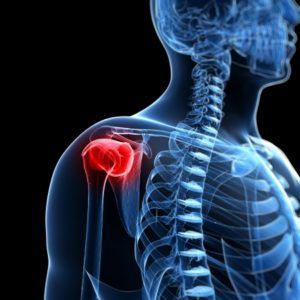Adult Stem Cell Therapy & Platelet Rich Plasma
Stem Cells Help Prevent Degeneration Associated with Massive Chronic Rotator Cuff Tears
 The rotator cuff is a group of four strong muscles and associated tendons that connect the upper arm to the shoulder. The rotator cuff adds stability to this part of the skeleton and allows rotational movement of the shoulder joint.
The rotator cuff is a group of four strong muscles and associated tendons that connect the upper arm to the shoulder. The rotator cuff adds stability to this part of the skeleton and allows rotational movement of the shoulder joint.
A condition known as rotator cuff tear can occur as a result of injury or age-related wear and tear, leading to weakness and pain. Massive tears of the rotator cuff are chronic injuries and are associated with significant and advanced degenerative changes. Fatty degeneration and muscle atrophy make the injury irreparable.
Now, a controlled laboratory study has been designed to evaluate the effect of several growth factors secreted by human mesenchymal stem cells (hMSCs) and whether this secretome can mediate regeneration of these severely degenerated tissues.
Conclusion:
The study results demonstrate that hMSC secretome is effective in decreasing both fatty degeneration and muscle atrophy in the muscles of the rotator cuff. This is of clinical relevance in patients with compromised tendon healing after late surgical repair of rotator cuff tears. The study describes a new approach to preventing progressive degenerative changes with precise local injections intramuscularly, as well as multiple systemic injections of hMSC secretome.
Method:
In a rat model, a bilateral massive rotator cuff tear (MRCT) was created in two tendons (supraspinatus and infraspinatus). A total of 44 Wistar-Han rats were divided into six groups. The control group underwent a sham surgery. A lesion control group had the creation of an MRCT. Four other groups were treated for MRCT lesions with varying periodicities of hMSC secretome. One group received a single local injection. Another group received multiple local injections. The third treated group received a single systemic injection, and finally, the fourth treated group received multiple systemic injections. The staircase test was used to analyze forelimb function. Fatty degeneration and muscle atrophy were evaluated at 8 and 16 weeks, post-injury. To identify which molecules in the hMSC secretome prevent muscular degeneration, a proteomic analysis was performed.
Results:
Untreated rats with MRCTs exhibited a considerably higher fat content at 8 weeks compared to rats who received a single or multiple local injections of hMSC secretome.
Compared to the untreated MRCT group, at 16 weeks, the hMSC secretome produced a protective effect in rats treated with multiple systemic, single local, and multiple local injections, in increasing order of effect.
At 8 weeks post-injury, only the group that received a single local injection displayed a significant higher muscle mass compared to the untreated group.
Proteomic analysis of the hMSC secretome revealed that it contains proteins, follistatin and pigment epithelium-derived factor, which are critical for muscle regeneration.






